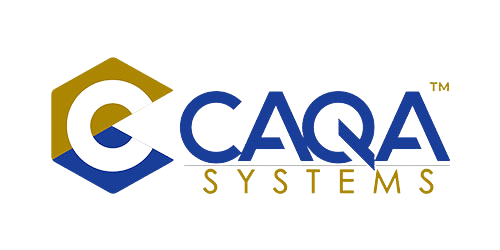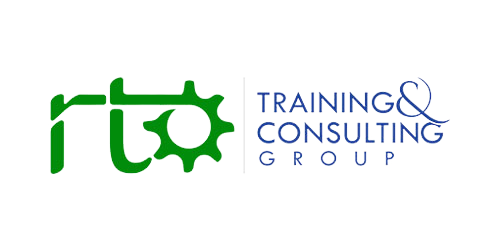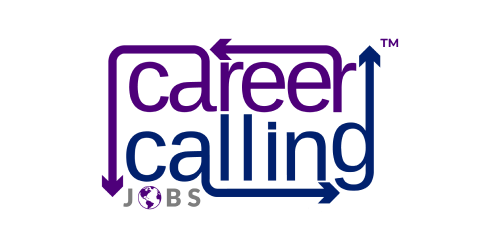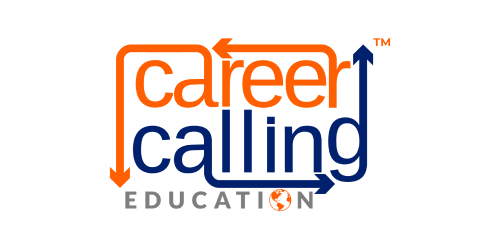Summary
Skills ministers from every Australian jurisdiction have used their August 2025 meeting to set a decisive agenda for 2026. The official communiqué placed the vocational education and training system at the centre of national ambitions for productivity, inclusion, and the transition to a clean economy. Ministers welcomed progress on reform and signalled the next phase of delivery: universal baseline AI capability across tertiary education, scalable infrastructure for lifelong learning, and targeted talent pipelines for housing construction and the clean-energy build-out. The Council’s position is unambiguous. Digital skills, modern apprenticeships, equity, and cross-sector harmonisation are now the levers through which governments intend to lift completions, relevance, and employment outcomes across both TAFE and non-TAFE provision. The message to providers and industry is that system stewardship, not isolated projects, will determine whether Australia secures the workforce it needs.
Why this agenda and why now
The context for the Council’s decisions is a labour market in transition. Generative AI is diffusing into workplaces as an augmentation technology rather than a mass displacement engine, but its impact on task design, productivity, and required skills is broad. At the same time, Australia faces binding capacity constraints in housing and in the electrification and transmission projects required for net zero. Employers are asking for graduates who can use AI tools responsibly, adapt to new technologies without losing judgment, and move through careers via stackable bursts of learning rather than single, front-loaded qualifications. Ministers have responded by recasting VET as the engine room for these national priorities. The agenda emphasises capability building at scale, coherent pathways between VET and higher education, and targeted investment where labour shortages are most acute.
Generative AI as a system-wide capability
Jobs and Skills Australia’s study on the AI transition framed generative AI as a pervasive, economy-wide capability rather than a niche technical specialism. Most roles are more exposed to augmentation than to automation, with routine clerical occupations closest to the automation frontier and strong upside for jobs that use AI as a force multiplier. Ministers aligned with that evidence. They endorsed universal digital and AI literacy across the tertiary system and supported the use of AI to improve assessment, feedback, and student support under strengthened governance. The signal to qualification designers is to embed practical AI competence in context: applied prompting and review in business services, AI-assisted documentation and diagnostics in health, sensor and data workflows in electrotechnology, and model-aware safety in community services and public safety training. The commitment extends beyond curriculum language to assessment practice. Providers are expected to measure the safe application of AI to real tasks, not simply awareness of risks or familiarity with tools.
Governance for safe and effective AI in learning
The Council’s endorsement of AI adoption is matched by a clear stance on safety. Ministers want transparent guardrails, auditable use of AI in assessment, and proportionate protections for learners. Providers should ensure that assignment design tests judgment, originality, and the ability to verify AI output rather than rewarding speed alone. They should publish clear rules about allowable AI use in each subject or module, record those rules in student handbooks, and implement declaration and verification steps at submission. Investment in educator capability is a parallel requirement. Lecturers, trainers, and assessors must be confident users of AI tools and must know how to detect and manage both productive use and misuse. System bodies will be expected to support this shift with shared exemplars, moderation guidance, and common definitions so that learners experience consistency as they move across programs and institutions.
Lifelong learning as infrastructure, not rhetoric
Ministers elevated lifelong learning from aspiration to a system requirement. They agreed to policies that normalise upskilling and reskilling across a working life, with Adult Community Education recognised for its distinct role in re-engaging learners and building foundation skills. This is not simply a funding tweak. It is a redesign of how Australians are expected to access learning over decades. The Council wants modular, stackable pathways that can be entered at any career stage, with clear recognition of prior learning and rapid credit for micro-credentials. The expectation is that a worker who completes a targeted, short course aligned to a job role can later stack that learning into a full qualification without repeating content or facing opaque recognition processes. Providers will need to make their recognition policies more transparent, digitise evidence trails across systems, and align assessment rubrics so that the same competency is not re-assessed at multiple points merely because it appears in different packaging.
A roadmap for a single tertiary system
The structural centrepiece is a Tertiary Roadmap to be led by the Australian Tertiary Education Commission in partnership with Jobs and Skills Australia and Commonwealth-state agencies. Ministers presented the roadmap as the vehicle for breaking down silos between VET and higher education. The aim is to move from ad-hoc credit-transfer fixes toward system-level design that treats tertiary education as a continuum. The roadmap will set milestones for qualification mapping, outcome parity, and student navigation. For learners, this should mean smoother movement between certificate and degree pathways, fewer dead ends, and clearer statements of what a credential enables in the labour market. For employers, it should mean less confusion about the capability attached to a qualification and easier recognition of skills, regardless of whether they were built in a TAFE workshop, a university lab, or in industry. Providers will be asked to align course structures with these harmonisation milestones and to expose credit information in plain language rather than burying it in course rules.
Modern apprenticeships and traineeships
Ministers backed a Future Apprenticeships and Traineeships Workplan and committed to a refreshed National Code of Good Practice by early 2026. The intent is to modernise the model for emerging technologies and sectors while preserving the strengths of earn-and-learn. The work plan emphasises blended methods in which on-the-job learning is supported by contemporary theory, digital content, and simulation. It also requires better recognition of prior skill so that experienced workers can move into apprenticeships without starting at zero. Equity is explicit. Ministers expect stronger support for women and under-represented cohorts to enter and remain in trades, including high-quality mentoring, safe workplaces, and targeted financial and pastoral support in the early stages of training. Employers will have a role in shaping rotations that expose apprentices to the full range of tasks required by new technologies, and regulators will be asked to ensure that supervision models keep pace with changing workplace configurations.
Housing and net-zero pipelines
The Council placed a premium on talent pipelines for housing and net zero. The policy logic is straightforward. Australia cannot deliver its clean-energy and housing targets without more electricians, lineworkers, plumbers, civil construction workers, refrigeration mechanics, scaffolders, crane operators, and allied roles. Ministers want workforce plans that front-load training capacity and supervision models in the regions where the build will occur. Providers will be expected to schedule practical training around local project timelines and to form deeper partnerships with employers to ensure that apprentices and trainees gain experience on the equipment and systems they will encounter on-site. The Council’s emphasis on transmission and large-scale renewables points to demand for skills in high-voltage work, commissioning, protection systems, and grid integration, as well as in community engagement and environmental management. VET will need to update training packages and accredited courses to capture these requirements and to provide short, targeted upskilling for existing tradespeople who are moving into new technologies.
Inclusion as non-negotiable
Ministers took a firm line on inclusion. Public investment must enable participation for all Australians, particularly women, First Nations learners, people with disability, and regional communities. The Council expects to see funding translated into completion and employment outcomes for these cohorts, not only into enrolments. Providers should design outreach and support that address specific barriers, including transport and housing stress for regional learners, cultural safety and co-design with First Nations communities, and accessible delivery modes for students with disability. In trades, the emphasis on safe workplaces and structured mentoring is not optional. Employers and group training organisations will be asked to demonstrate that women and under-represented cohorts are not only recruited into apprenticeships but also retained and progressed. Ministers also want transparent publication of performance against equity targets so that communities can see where progress is being made and where gaps persist.
VET’s role in responding to domestic, family and sexual violence
The Council underscored VET’s role in Australia’s response to domestic, family and sexual violence. Following the South Australian Royal Commission, ministers highlighted opportunities to review units and qualifications so graduates in care, community services, policing, justice, and frontline roles can better identify, respond to, and prevent DFSV. This agenda is both curriculum and workforce support. Training products should embed trauma-informed practice, risk assessment, referral pathways, and inter-agency collaboration. Supervisors and assessors must be equipped to support learners who encounter DFSV content in training or in their workplace placements, including through clear escalation procedures and access to professional support. Providers should work with employers to ensure that placements and simulated learning environments are psychologically safe and that assessment does not re-traumatise learners.
National capability: TAFE, data, and digital partnerships
Institutional capability featured prominently in the ministers’ decisions. The formation of a National TAFE Network Committee creates a new mechanism to coordinate excellence across public providers and to align delivery with national priorities. The Council wants the network to surface practice that works and to spread them quickly rather than leaving innovations stranded on single campuses. Ministers also noted ongoing renewal at NCVER to improve data quality and timeliness. Timely, reliable data is the basis for performance management and for confidence in public reporting, and the Council expects to see faster feedback loops from enrolment to employment outcomes. State-led digital initiatives are part of the picture. The NSW Digital Skills and Workforce Compact and its integration with the Future Skills Organisation’s Digital Knowledge Exchange were called out as blueprints that other jurisdictions can adapt. The common thread is industry-driven upskilling delivered through partnerships rather than stand-alone programs.
What providers should do now
Providers can start by mapping every qualification and skill set on their scope against the ministers’ four pillars: baseline AI and digital capability, modular and stackable delivery, alignment to housing and net-zero projects, and equity outcomes. They should identify where applied AI competence is already assessed and where it needs to be introduced or deepened. They should plan recognition and credit structures that allow short courses to stack into higher awards without friction, and they should publish those pathways in plain language for learners and employers. Programs that feed housing and energy projects should be prioritised for timetable flexibility, employer input into assessment, and placement coordination in regions where work will occur. Support for women, First Nations learners, learners with disability, and regional students should be resourced upfront rather than treated as an afterthought. Internal professional learning for educators on AI, new technologies, and trauma-informed approaches should be scheduled ahead of curriculum changes so that delivery quality matches policy ambition on day one.
What employers should do now
Employers should audit their roles for AI augmentation and identify where entry-level hiring needs to shift from task execution toward tool-enabled analysis and problem-solving. They should partner with providers to co-design assessment tasks that reflect actual work, offer supervision models that expose apprentices and trainees to new technologies without compromising safety, and build mentoring structures that support underrepresented cohorts. Employers in construction and energy should work with providers to align practical training with project schedules and to make plant and equipment available for learning. Employers across sectors should prepare to recognise micro-credentials and skill sets as part of hiring decisions where they stack into recognised qualifications, thereby reinforcing the value of modular learning.
What learners should expect
Learners should expect to encounter AI tools in their study in ways that require judgment and verification. They should expect clear guidance about when and how AI can be used in tasks, and they should expect an assessment that rewards their ability to apply tools responsibly rather than their speed alone. They should see more options to start with a short, targeted credential and to stack that learning into a full qualification as their career develops. They should find better support in regional locations and more placements linked to major projects. They should also see clearer statements about what a credential enables in the labour market and more consistent recognition of their prior learning as they move between institutions.
Risks that could derail the agenda
Several risks could slow delivery. The first is uneven adoption of AI capability across disciplines and providers. Without shared exemplars and moderation approaches, learners could face inconsistent expectations, and employers could encounter variable competence. The second is credit and recognition complexity. If stacking and credit remain opaque or inconsistent, lifelong learning will feel like bureaucracy rather than empowerment. The third is supervision capacity in trades. Even with more training places, apprentices cannot progress without supervisors who have the time and incentives to teach. The fourth is placement strain in care and community services. Providers will need to coordinate with employers to ensure that growth in enrolments does not outstrip safe placement capacity. The fifth is data lag. Ministers have signalled that performance will be managed in real time, but that depends on reliable data pipelines from enrolment to outcome. Addressing these risks requires coordination, early investment in educator development, and governance that allows redirection when evidence shows that an approach is not working.
How success will be measured
Ministers have tied the agenda to outcomes that are observable. Success will show up as more graduates being able to use AI tools responsibly in their first months on the job. It will show up as shorter, clearer pathways from short courses into full qualifications and as visible harmonisation between VET and higher education. It will be evident in the number of apprentices and trainees working on transmission, renewables, and housing projects, in their retention and progression, and in employer reports of readiness. It will appear in equity data that shows improvements in participation, completion, and employment for women. First Nations learners, learners with disability, and regional students. It will also show up in the maturity of the National TAFE Network and in the speed with which good practice spreads. NCVER’s renewal will be visible in more timely publication cycles and in data products that allow providers and governments to adjust course while a cohort is still in training, not months after graduation.
A 2026 delivery rhythm
The immediate delivery rhythm for late-2025 into 2026 is clear. Providers should embed baseline AI and digital competence across programs and make assessment changes that test responsible application. The Tertiary Roadmap should be published with tangible milestones for harmonisation, and providers should schedule their own mapping work to those milestones. The apprenticeships workplan and the new code of good practice should be implemented with close involvement from industry and with strong support for underrepresented cohorts. Priority pipelines for housing and net-zero should be scaled in regions where projects are scheduled, with timetables, placements, and supervision aligned to real work. DFSV-related training should be upgraded across relevant packages and backed by supervisor capability and learner safeguards. The National TAFE Network should be used to diffuse effective practice quickly, and NCVER’s data improvements should be leveraged to manage performance in real time.
From policy to practice
The Council’s August decisions situate VET at the heart of Australia’s productivity, inclusion, and transition agendas. The acceptance that the AI transition is a continuous change program reframes what it means to prepare for work. Most jobs will change rather than vanish. Demand will grow for human-centred, place-bound work that cannot be offshored or automated. The payoff from VET reform will come from breadth, AI fluency for everyone, depth, advanced skills where automation bites, and speed, modular offerings that let workers move with the labour market. Ministers have set the direction. Delivery now rests with providers, employers, and system agencies willing to collaborate, share what works, and measure success by completions, job match, and equity, not by enrolment counts alone. If these stakeholders act in concert, Australia can develop a workforce that is adaptive, fair, and ready for the clean, digital economy.


































